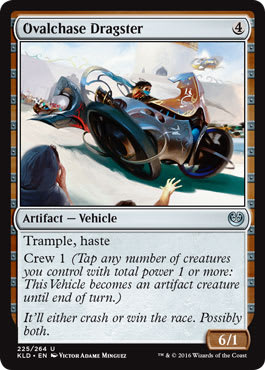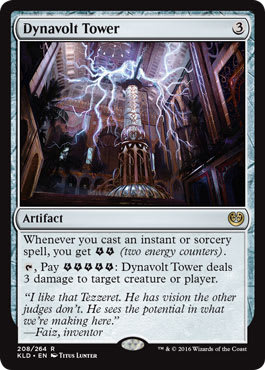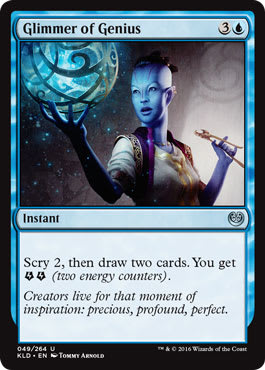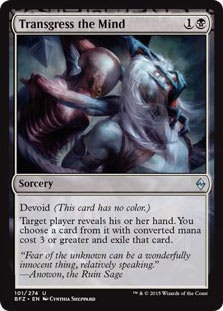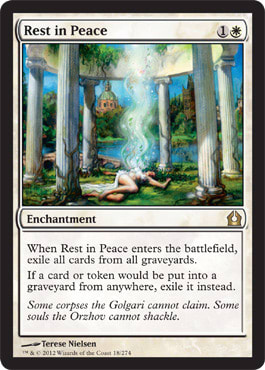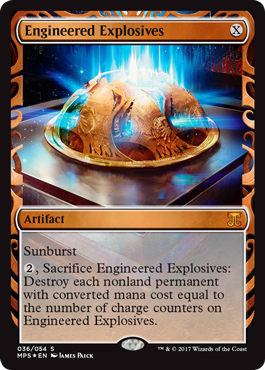Right now, my life feels a lot like The Fast and the Furious: Tokyo Drift. I say that both because Standard is currently a fast, punishing format, with a top deck reminiscent of old U/W Delver decks and plenty of backbreaking sequences, and because right now, it’s snowing in Japan. Get it? Fast and Furious, with Tokyo drifts.
I’ll be here all week, folks.
Seriously, we spent last week trying to figure out what made U/W Flash so good, and how we could properly combat both it and the B/G Delirium deck that make up the bulk of the format. And why wouldn’t they? The de-facto “sweeper” of the format is actually Ishkanah, Grafwidow, as the tokens it creates gum up the board and it even brick-walls Smuggler's Copter. A regular board wipe effect wouldn’t kill the Copter, which means that a creature-sweeper is the next best option. To be fair, I believe this format would benefit from a Planar Cleansing-type effect, something to get rid of erstwhile Vehicles and sticky Planeswalkers. Even a Languish would be welcome, but the fact that a single Gideon emblem ruins Languish’s ability to kill Archangel Avacyn means that that card might not be enough, in and of itself.
So what is the dynamic of Standard, at press time? Well, it seems like the format that was once defined by Aetherworks Marvel is now defined by Flash, where the other decks are forced to dance around week by week in order to properly line up against the U/W configuration. Should the Ishkanah deck try to sack out a Rebuff-heavy opponent by playing the Marvel package, or is it better to try to battle through the countermagic with the Emrakul endgame? Is it better to play Vehicles and go underneath, or control and go over the top? Well, if there’s one thing we know for sure, it’s that a settled format is easier for a control deck to attack. The control decks that battled in the finals of the Pro Tour have basically fallen off the map. Let’s bring sexy back, shall we?
U/R Control ? Kaladesh Standard | Tulio Jaudy, 5-0 League
- Creatures (4)
- 4 Torrential Gearhulk
- Spells (30)
- 1 Confirm Suspicions
- 1 Epiphany at the Drownyard
- 1 Flame Lash
- 1 Welding Sparks
- 3 Anticipate
- 3 Glimmer of Genius
- 3 Negate
- 3 Revolutionary Rebuff
- 4 Galvanic Bombardment
- 4 Harnessed Lightning
- 4 Void Shatter
- 2 Dynavolt Tower
- Lands (26)
- 10 Island
- 3 Mountain
- 1 Highland Lake
- 4 Aether Hub
- 4 Spirebluff Canal
- 4 Wandering Fumarole
- Sideboard (15)
- 1 Dragonmaster Outcast
- 1 Prophet of Distortion
- 1 Negate
- 2 Tears of Valakut
- 1 Jori En, Ruin Diver
- 4 Weaver of Lightning
- 2 Brutal Expulsion
- 2 Summary Dismissal
- 1 Sphinx of the Final Word
Basically, Dynavolt Tower and Torrential Gearhulk make Revolutionary Rebuff very sad, while the huge density of counterspells means that you’re easily able to go long against Delirium decks. Remember last week, when we discussed how Flash molds its transformational sideboard after old Delver decks? Those old Delver decks got to use Snapcaster Mage to increase both their flexibility (in that a single sideboard slot change resulted in a disproportionately high impact) and their density (in that you had a virtual four extra counterspells or removal spells, whichever you needed for a given matchup). Gearhulk has a similar effect here, as well as (of course) being a monster beater that ends a game very quickly. The weird one-ofs like Flame Lash and Confirm Suspicions are often not good enough by themselves, but with a card like Gearhulk in the mix, they nudge just over the line of playability. Flame Lash, in particular, is an unusual choice that actually works wonders against cards like Gideon, Ally of Zendikar, or Avacyn out of Flash, or 4/4 Grim Flayers and Lilianas out of Delirium. Additionally, you’re a “control” deck, so people will want to sideboard out their removal, but if they cut too much of the removal, your Gearhulks will end them in a hurry.
To be sure, there are some odd individual choices. Prophet of Distortion, in particular, strikes me as a worse Dragonmaster Outcast, and Weaver of Lightning seems like its time may have come and gone. With a pile of countermagic and card draw, though, you’re set to take on the world. You’ve got all the answers to the format in your colors, though, and it’s just about selecting the right mix of counterspells and removal to properly line up.
Oh, and one more thing. This might actually be one of the easier decks in Standard to play. You don’t have that much back-and-forth, and combat math is not a concern. You just counter things, draw cards, and eventually pull ahead with a Gearhulk. It’s so simple compared to the crewing and scrying and looting and combats of Vehicles against Flash, or the intricacies of dueling Emrakuls in the Delirium mirror. There’s actually a huge under-appreciated advantage to playing a straightforward game plan. You can outsource most of your decisions to auto-pilot, saving your mental energy for the truly unique and complex situations during a tournament. The only downside? You don’t get to play with any of the super-powerful cards like Emrakul, Ishkanah, Smuggler's Copter, Avacyn, or Gideon. You’re playing Cancels and bad Rune Snags, Shocks and bad Incinerates, an Impulse that only digs three cards deep, and even a freaking Lightning Blast! There are only two good cards in the whole deck (Glimmer and Gearhulk), and I typically prefer to play with more powerful spells. This deck looks like an underpowered version of a deck that existed in 1997. Nevertheless, the deck is a potent metagame choice, if not super high on the raw power scale.
Okay, let’s step into our hypothetical time machine for a minute and try to figure out what happens once R/G Aetherworks Marvel eats into B/G Delirium’s “Ishkanah slice” of the metagame. I love these types of predictive modeling scenarios, because it’s the closest Magic ever gets to Chaos Theory. Chaos Theory, for the uninitiated, is “the branch of mathematics that deals with complex systems whose behavior is highly sensitive to slight changes in conditions, so that small alterations can give rise to strikingly great consequences.” Theorizing about what happens as small fluctuations in MTGO metagames give rise to new powerhouse archetypes is basically Magic’s equivalent of predicting a hurricane, or modeling the stock market. Not only is metagame prediction Magic’s most transferrable skill, but it’s the one that pays off in the biggest way when you get it right.
So, Logan Nettles (Jaberwocki on MTGO, and the biggest driving force behind R/G Marvel) has mentioned that the U/R decks are very, very good against his particular deck, and he expects them to rise in popularity in response to the rise in Marvel. In fact, that may already be happening. A current metagame of U/W Flash / B/G Delirium lets in R/G Marvel, which lets in U/R Control, which makes the metagame Flash / U/R / Marvel. Marvel immediately tanks in playability (as is to be expected when the other two decks both play heavy counterspell themes) and now we see a format dominated by Flash and U/R. What comes next? Delirium, Vehicles, 4c Aggro, and assorted Marvel decks are now waiting in the wings. Strategically, a Vehicles deck should be favored against Flash, and a version with the Black splash (for Scrapheap Scrounger and Unlicensed Disintegration) should be able to keep the pressure on against U/R Control. So, are we gonna get back in the car?

Well, not so fast. The thing to remember is, Magic is stickier than the stock market, stickier than weather patterns, and certainly stickier than the kind of atomic experiments scientists perform to deliberate on the exact definitions of “randomness” and “chaos”. This is doubly true in real life, where an average opponent at a PPTQ, Open, or GP will almost certainly stay with the deck they’ve owned for months. Practice is important, and we’re dealing with real human beings with real limitations on their Magic deck selection, so Magic’s version of predictive modeling is far from the frictionless world of high-frequency trading.
Standard, even though it’s the format with the lowest barrier to entry, still has these sticking points. You can bet that people will be playing Delirium and Flash through the release of Aether Revolt, and you often gain more from knowing your deck than from positioning yourself perfectly in an idealized metagame. I must confess, the deck I actually have the most experience with is classic Mardu Vehicles, and as such there’s a very good chance that I simply play that deck for the Standard portion of the Invitational. Here’s where I’m at:
4-Color Vehicles ? Kaladesh Standard | Ben Friedman
- Creatures (22)
- 3 Inventor's Apprentice
- 3 Thalia, Heretic Cathar
- 4 Scrapheap Scrounger
- 4 Thraben Inspector
- 4 Toolcraft Exemplar
- 4 Veteran Motorist
- Planeswalkers (2)
- 2 Gideon, Ally of Zendikar
- Spells (14)
- 3 Unlicensed Disintegration
- 4 Harnessed Lightning
- 3 Cultivator's Caravan
- 4 Smuggler's Copter
- Lands (22)
- 2 Mountain
- 4 Plains
- 4 Aether Hub
- 4 Concealed Courtyard
- 4 Inspiring Vantage
- 4 Spirebluff Canal
- Sideboard (17)
- 3 Spell Shrivel
- 2 Gideon, Ally of Zendikar
- 1 Chandra, Torch of Defiance
- 2 Stasis Snare
- 2 Archangel Avacyn
- 3 Fragmentize
- 2 Always Watching
- 2 Declaration in Stone
I’m considering not playing the Shrivels and cutting the Blue mana. Transgress the Mind may be good enough, partially because such a high density of three-cost spells is a bad thing. You can’t realistically hold up so much mana. Ceremonious Rejection could make the cut instead, although that card is so much narrower. I’d prefer a card that counters more of the flagship spells in the format, and Spell Shrivel is the only real option. Fragmentize is great at creating double-spell turns as early as turn three, and a single Key to the City would also be a fine option to breaking through board stalls (read: Ishkanahs). Caravan is awesome here, and it often creates your best turn-three sequences, such as Caravan-Fragmentize your Copter. There’s also nothing better than sitting back and sending in a single unblockable Caravan twice to punch through the last damage via Key to the City.
Clearly, the Declarations and Snares are for Amalgam decks, Avacyns, and potentially Emrakul. The big question marks here are the three Thalias and the three Apprentices. Why, you might ask, did I take after President-Elect Trump and choose to fire one of the contestants on The Apprentice? The reason is twofold. One, Apprentice stinks when you’re trying to break through opposing Reflector Mages, Copters, and Spell Quellers. It’s the worst 1-drop, and you don’t necessarily need twelve 1-drops to consistently have one on the first turn. Two, you need to make room for Thalia (who is great, by the way), and I don’t want to cut into any of the other awesome spells. I suppose it’s feasible to cut a Disintegration, but I think you’ll win far more games from having the extra removal spell than from having another Kird Ape. The diminishing returns are real, folks. Don’t just jam on redundant effects because they exist, have a coherent reason for playing them!
A list without Blue might look something like:
Mardu Vehicles ? Kaladesh Standard | Ben Friedman
- Creatures (22)
- 3 Inventor's Apprentice
- 3 Thalia, Heretic Cathar
- 4 Scrapheap Scrounger
- 4 Thraben Inspector
- 4 Toolcraft Exemplar
- 4 Veteran Motorist
- Planeswalkers (2)
- 2 Gideon, Ally of Zendikar
- Spells (14)
- 3 Unlicensed Disintegration
- 4 Harnessed Lightning
- 3 Cultivator's Caravan
- 4 Smuggler's Copter
- Lands (22)
- 4 Plains
- 6 Mountain
- 4 Aether Hub
- 4 Concealed Courtyard
- 4 Inspiring Vantage
- Sideboard (17)
- 2 Transgress the Mind
- 1 Key to the City
- 2 Gideon, Ally of Zendikar
- 1 Chandra, Torch of Defiance
- 2 Stasis Snare
- 2 Archangel Avacyn
- 3 Fragmentize
- 2 Always Watching
- 2 Declaration in Stone
I would absolutely feel comfortable registering this list for an upcoming Standard tournament. The flexible slots are, of course, the Chandra, the removal package in the sideboard, and the Always Watchings. I think Watching is great, especially with Thalia, and I would be loath to cut them, but I could see a world where you wouldn’t want them. That would probably be a world where Thalia was no longer good, and you’d play Depala, Pilot Exemplar and more Vehicles over the Thalias. Depala and Always Watching — nonbo. Thalia and Always Watching - combo!
Now, I’ve had a few requests to discuss Modern for upcoming RPTQs. Here’s the list I intend to register, with one spicy new piece of technology.
Bant Eldrazi ? Modern | Ben Friedman
- Creatures (24)
- 1 Spellskite
- 3 Drowner of Hope
- 4 Eldrazi Displacer
- 4 Eldrazi Skyspawner
- 4 Noble Hierarch
- 4 Reality Smasher
- 4 Thought-Knot Seer
- Spells (14)
- 4 Path to Exile
- 4 Ancient Stirrings
- 3 Engineered Explosives
- 3 Talisman of Progress
- Lands (22)
- 1 Forest
- 1 Plains
- 1 Breeding Pool
- 1 Temple Garden
- 3 Brushland
- 3 Yavimaya Coast
- 4 Cavern of Souls
- 4 Eldrazi Temple
- 4 Windswept Heath
- Sideboard (15)
- 2 Worship
- 2 Stubborn Denial
- 2 Disdainful Stroke
- 3 Relic of Progenitus
- 3 Grafdigger's Cage
- 2 Stony Silence
- 1 Engineered Explosives
We’re going hard on Stirrings-able hate pieces here, as we want to ensure maximum consistency against the Dredge menace. Rest in Peace is a great card, don’t get me wrong. The problem is twofold. Number one, having a non-Stirrings-able hate card means that we need to play more physical hate cards in order to consistently have one. With six colorless hate pieces, we can instead rely a little more on Stirrings to turn up the goods, meaning six is the new seven when it comes to Dredge hate. This opens up a sideboard slot for a second Worship, which is a pretty important card against Burn, Affinity, Bogles, Merfolk (assuming they don’t play Snag), Elves (not the Shaman of the Pack versions, of course) and Dredge itself.
Speaking of important colorless cards, take a look at the one new card in the 75 that’s been making waves against the most annoying card in the format. That’s right, Blood Moon can go pound sand, because Talisman of Progress is ready to fight back on behalf of team Eldrazi. Most of the Blue Moon or R/W Sun and Moon decks expect smooth sailing against Bant Eldrazi, because one hate card shuts down . . . basically our entire deck. And yes, that would usually be the case. I’ve seen people go so far as to incorporate a Wastes in order to hope to gain some play against these Moon decks, which seems like a fool’s errand to me. However, we can replace a land, a Birds of Paradise, and a Spellskite with three copies of an old accelerant, and voila! What’s old is new again. Land, crack, fetch Forest, Stirrings, find the U/W Talisman, laugh in their face. Plus, Talisman allows for turn-three Smashers and Thought-Knot Seers the same way that Birds of Paradise does. Sure, it’s not a 1-drop, but it also doesn’t get Bolted. It allows you to incidentally add massive percentage to a collection of matchups that comprise 10% of the format, while not hurting your deck’s bottom line. The downside is an obvious dissynergy with Stony Silence, and that it adds to your number of 2-drops (hurting your own Engineered Explosives). On the plus side, if you’re casting Explosives for one (against Infect or Death's Shadow, for example), you now only have four 1-drops in the deck. These are subtle changes, but they all basically wash out in the face of the shift to the Blood Moon matchups. Plus, if people are playing Anger of the Gods, you’d rather minimize your mana creatures’ exposure by playing non-creature mana accelerants.
Cards I’m looking at changing include: the Spellskite vs. Engineered Explosives split in the main, which could be 2-2 rather than 1-3, as well as adding a value land like Gavony Township, Sea Gate Wreckage, or Moorland Haunt now that we’ve gone up to 29 mana sources. It’s even more if you count Skyspawner Scions! You could replace a Brushland, Yavimaya Coast, or Cavern of Souls and still maintain your colored and colorless mana source counts, which is another incidental benefit of the Talisman.
I’d like a pair of Blessed Alliance in the deck somewhere to help against Burn and Infect, and I’d consider ditching Spellskite altogether to that end. The only problem is that Spellskite is a key component in the mirror matches, where you win by assembling Spellskite, Displacer, Drowner, a ton of mana, and eventually Thought-Knot Seer. This is how you win when everyone has Worship, and it’s fairly under-appreciated as a game-plan.
That feeling you get when you flip the script on a previously-frustrating matchup is incomparable in Magic. It must be up there with a next-level bluff or unprecedented transformational sideboard plan, and I’m excited to run it out there for the Modern portion of the Invitational. For Standard, though, I’m hoping to drive a truck right through the tournament. Or at the very least, fly over it. Right now, I’m about to hop on Tokyo’s very own Aradara Express and head over to the only place on earth with Magic card vending machines. Knowing how much Magic players love a good gamble, I assume we only don’t have those machines in America because card store owners hate money . . .
Regardless, traveling for Magic is great, and I’m lucky to be here on this fine Thanksgiving. I hope you all have a great holiday, no matter where your Mardu Transportation has taken you for this weekend, and I look forward to sharing my Grand Prix tournament report with you all next week!
Ben













